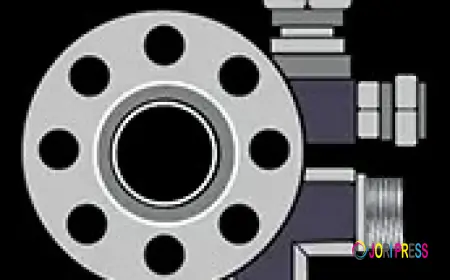Global Nitric Acid Market Analysis, Size, Trends, and Forecast to 2030
According to the detailed TechSci Research report,
Nitric Acid Market – Global Industry Size, Share, Trends, Competition Forecast & Opportunities, 2030F, the global nitric acid market reached
USD 27.25 billion in 2024. The market is expected to grow steadily with a
CAGR of 3.72% during the forecast period, propelled by technological innovations, industrial growth, regulatory support, and increasing demand in key downstream sectors.
Nitric acid, a highly versatile chemical, is central to multiple industrial applications ranging from fertilizers, explosives, polymers, and specialty chemicals, underscoring its strategic importance across global manufacturing and agriculture.
Technological Innovations Driving Market Growth
Continuous improvements in nitric acid production technologies are crucial for driving efficiency and sustainability. Manufacturers are increasingly adopting catalyst-enhanced production systems, low-emission reactors, and energy recovery solutions to improve yields and reduce environmental impact.
Regions with strict emission norms, such as Europe and parts of Asia-Pacific, are witnessing high adoption of these advanced technologies. Low-emission reactor designs not only comply with regulatory requirements but also optimize raw material conversion, resulting in higher production efficiency. Additionally, thermal energy recovery systems allow plants to reuse energy for steam and electricity generation, minimizing operating costs.
These technological advancements are particularly relevant for large-scale production facilities, enabling producers to meet rising industrial and agricultural demand while maintaining environmental compliance.
Government Policies and Strategic Incentives
Government policies play a pivotal role in shaping the global
Nitric Acid Market. Many agriculturally-driven economies are introducing
production-linked incentives, subsidies, and tax benefits to encourage domestic manufacturing of fertilizers and chemicals.
These initiatives support self-reliance in essential industrial inputs and create favorable market conditions for nitric acid. For example, policies targeting nitrogen-based fertilizer production directly enhance nitric acid consumption across the upstream and downstream sectors. Countries such as India, China, and Brazil have emphasized domestic fertilizer production to ensure food security, which indirectly boosts nitric acid demand.
Agriculture: The Key Demand Driver
The agricultural sector remains a major driver of nitric acid consumption. Nitric acid is essential in producing ammonium nitrate, a vital ingredient in nitrogen-based fertilizers.
With global populations growing and arable land limited, maximizing crop yield has become a priority. Countries heavily reliant on agriculture, including India, Brazil, and the United States, are increasingly adopting high-efficiency fertilizers, which has created a steady demand for nitric acid.
Furthermore, innovations in fertilizer formulations, such as controlled-release fertilizers and micronutrient-enriched products, have further intensified nitric acid usage in the agricultural supply chain.
Production Technologies and Plant Type Insights
The global nitric acid market is segmented by plant type, with dual pressure plants dominating due to superior efficiency. Dual pressure plants operate with two-stage pressure systems, using high pressure for ammonia oxidation and lower pressure for absorption. This arrangement increases raw material conversion efficiency, resulting in higher nitric acid yield per unit of ammonia.
Advantages of Dual Pressure Plants:
-
Improved conversion efficiency of ammonia to nitric acid
-
Thermal energy recovery and reuse
-
Reduced energy consumption and operating costs
-
Enhanced sustainability for large-scale production
Dual pressure systems are particularly suited for high-capacity plants exceeding 1,000 metric tons per day, making them ideal for industrial-scale fertilizer complexes and chemical manufacturing units in Europe, Asia-Pacific, and North America.
Mono-pressure systems, while simpler and less capital-intensive, are generally employed in smaller plants or niche applications. However, dual pressure technology remains the preferred choice for high-volume production and energy efficiency.
Sales Channel Insights
The nitric acid market operates through direct and indirect sales channels.
-
Direct Sales: Typically cater to large industrial clients, ensuring consistent supply and long-term contracts.
-
Indirect Sales: Includes distributors, wholesalers, and retailers, primarily serving small-scale manufacturers and emerging markets.
The choice of sales channel impacts market reach, pricing strategy, and customer relationships. With increasing industrial demand, direct sales channels dominate the high-volume supply segment, whereas indirect channels support regional and specialized applications.
End-Use Applications
Nitric acid is a versatile chemical with applications across various industries:
-
Fertilizers (AN & CAN): Nitric acid is a critical input in producing ammonium nitrate and calcium ammonium nitrate.
-
Explosives (TNT): Used as a precursor for trinitrotoluene, crucial in mining, construction, and defense sectors.
-
Polymers (Adipic Acid, TDI): Key feedstock for producing nylon and polyurethane foams for automotive, construction, and packaging industries.
-
Specialty Chemicals (Nitrobenzene, Others): Used in industrial chemical syntheses and pharmaceutical intermediates.
High-demand sectors such as agriculture, mining, construction, and chemical manufacturing continue to expand nitric acid consumption, highlighting its essential role in industrial value chains.
Regional Market Insights
North America
North America is projected to register the fastest growth in the nitric acid market. Key growth drivers include:
-
Mining and mineral exploration activities requiring ammonium nitrate-based explosives
-
Increased production of adipic acid and TDI for polymers
-
Adoption of low-emission, energy-efficient production technologies
The region’s robust infrastructure, skilled labor force, and capital availability have accelerated the adoption of sustainable nitric acid production methods, such as catalytic N₂O abatement systems, helping manufacturers scale operations while adhering to stringent environmental standards.
Europe
Europe emphasizes environmental compliance and sustainability, leading to widespread adoption of catalyst-enhanced systems and energy recovery solutions. European producers focus on reducing carbon emissions and N₂O by-products, aligning with EU industrial regulations.
Asia-Pacific
Asia-Pacific is a significant contributor to the nitric acid market due to its large agricultural base and rapid industrialization. Countries like China, India, and Japan are investing in fertilizer and chemical manufacturing, driving demand for nitric acid across agriculture and industrial applications. Emerging economies in Southeast Asia are also witnessing increased adoption of dual pressure plants and energy-efficient technologies.
Competitive Landscape
The global nitric acid market is highly competitive with several multinational and regional players:
-
Celanese Corporation
-
Jiangsu Sopo Chemical Co., Ltd.
-
Eastman Chemicals Company
-
Archer Daniels Midland
-
Tate & Lyle Plc.
-
BASF SE
-
Dow Chemical
-
BioAmber Inc.
-
Henan Jindan Lactic Acid Technology Co., Ltd.
-
Nature Works LLC
These companies focus on capacity expansion, technological innovation, and sustainable production to maintain a competitive edge. Strategic partnerships, mergers, and acquisitions are common strategies to strengthen market positioning.
Future Market Outlook and Opportunities
The
Nitric Acid Market is expected to witness sustained growth, supported by its indispensable role across multiple high-demand sectors. Key opportunities include:
-
Expanding production capacity with dual pressure and low-emission technologies
-
Increasing demand from agriculture, mining, and polymer sectors
-
Strategic investments in emerging markets with growing fertilizer and industrial chemical requirements
-
Integration of renewable energy in nitric acid production
Producers focusing on efficiency, environmental compliance, and innovation are well-positioned to capture a significant market share over the next decade.
FAQs
Q1: What factors are driving the growth of the Nitric Acid Market?
Answer: Market growth is fueled by agricultural demand for fertilizers, industrial applications in polymers and explosives, and adoption of energy-efficient production technologies.
Q2: Which plant type dominates nitric acid production globally?
Answer: The dual pressure plant dominates due to higher efficiency, thermal energy recovery, and suitability for large-scale production.
Q3: How does North America contribute to nitric acid demand?
Answer: North America leads due to mining, polymer production, and adoption of low-emission production technologies.
Q4: What are the primary applications of nitric acid?
Answer: Fertilizers (AN & CAN), explosives (TNT), polymers (Adipic Acid, TDI), and specialty chemicals (Nitrobenzene) are the main applications.
Q5: Who are the leading players in the global nitric acid market?
Answer: Key companies include Celanese Corporation, BASF SE, Dow Chemical, Eastman Chemicals, and Archer Daniels Midland.
For further insights, the full
Nitric Acid Market report provides detailed market size, competitive landscape, regional analysis, and growth projections, enabling informed investment and strategic decisions.
 Like
0
Like
0
 Dislike
0
Dislike
0
 Love
0
Love
0
 Funny
0
Funny
0
 Angry
0
Angry
0
 Sad
0
Sad
0
 Wow
0
Wow
0

















































